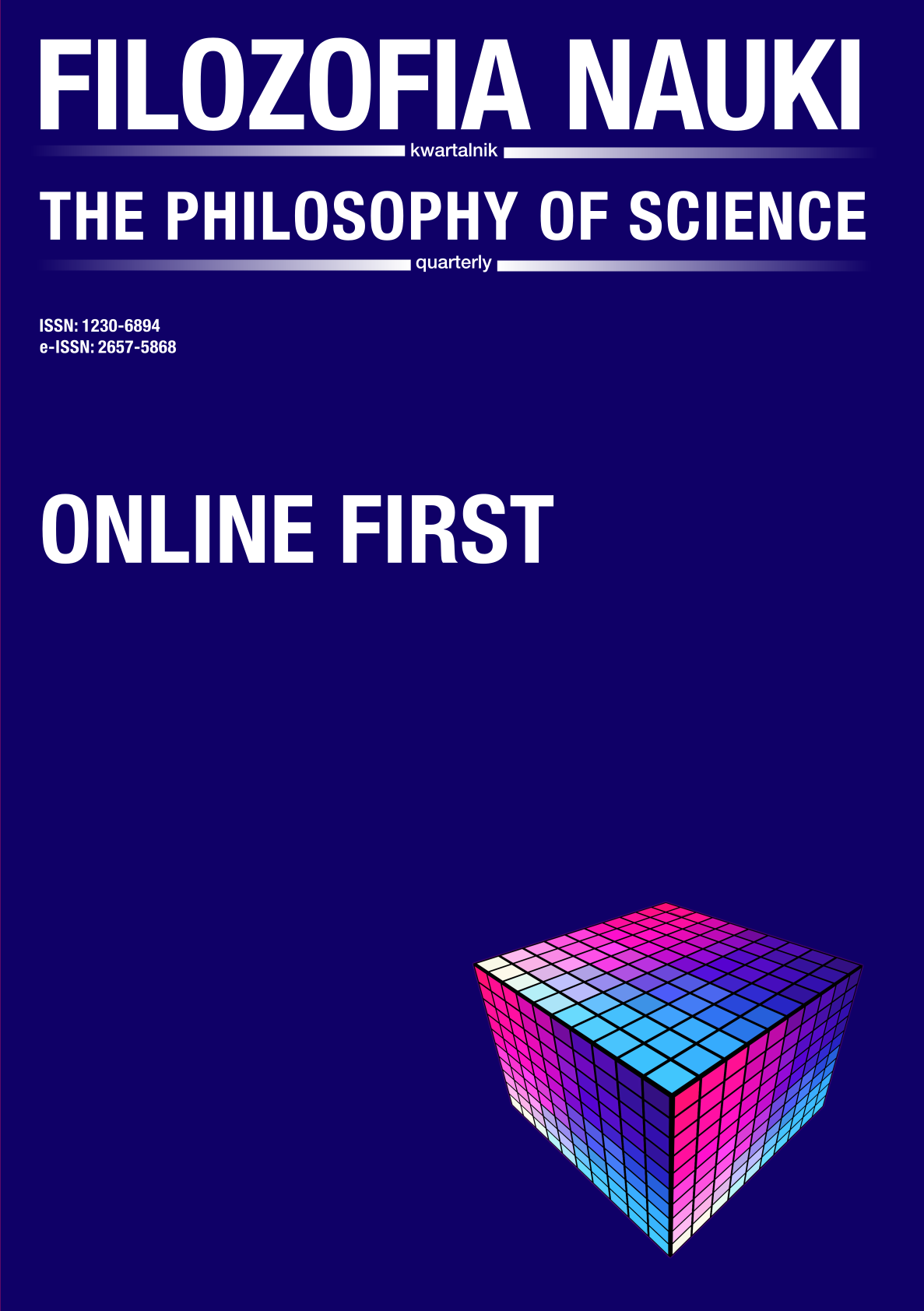Are Scientific Revolutions Predetermined? Critical Appraisal of Wojciech Sady’s Struktura rewolucji relatywistycznej i kwantowej w fizyce (The Structure of the Relativistic and Quantum Revolution in Physics)
DOI:
https://doi.org/10.14394/filnau.2023.0003Słowa kluczowe:
scientific revolution, relativity, quantum mechanics, underdetermination, imaginationAbstrakt
In his book Struktura rewolucji relatywistycznej i kwantowej w fizyce (The Structure of the Relativistic and Quantum Revolution in Physics, 2020), Wojciech Sady presents his vision of the two greatest scientific revolutions in the 20th century. The book provides an illuminating account of the way these revolutions proceeded and strongly supports the thesis that, contrary to Thomas Kuhn’s famous suggestions, the revolutions involved no breaches in the continuity in scientific development but progressed in an evolutionary (although swift) step-by-step way, and were products of collective interactive processes in the scientific community rather than individual achievements of geniuses. On the other hand, it makes a number of controversial claims. In this article, I contest Sady’s claims that new scientific theories (including the most revolutionary ones) logically follow from the theoretical and experimental knowledge already available (the Entailment thesis) or, at least, their emergence is necessary, inevitable, given the available knowledge, the thought style of the scientific community, and some minimally necessary conditions for the development of science (the Necessitation thesis), and that the role of extra-logical and extra-empirical factors, that can be designated as “creative imagination,” in the development of science is either negative or neglectable.
Bibliografia
Cushing J. (1994), Quantum Mechanics: Historical Contingency and the Copenhagen Hegemony, Chicago–London: University of Chicago Press.
Feyerabend P. (1970), “Consolations for the Specialist” [in:] Criticism and the Growth of Knowledge, I. Lakatos, A. Musgrave (eds.), Cambridge: Cambridge University Press, 197–230. https://doi.org/10.1017/CBO9781139171434.010
Fleck L. (1935), Entstehung und Entwicklung einer wissenschaftlichen Tatsache: Einführung in die Lehre vom Denkstil und Denkkollektiv, Basel: Beimo Schwalbe & Co.
Hempel C. (1966), Philosophy of Natural Science, Englewood Cliffs, N. J.: Prentice-Hall.
Kotowski M. (2021), “Czy teza o niedookreśleniu teorii przez dane doświadczenia czyni sukcesy nauki cudem?,” Studia Philosophica Wratislaviensia 16(3), 69–74. https://doi.org/10.19195/1895-8001.16.3.8
Kuhn T. (1962), The Structure of Scientific Revolutions, Chicago: University of Chicago Press.
Kuhn T. (1979), “Foreword” [in:] L. Fleck, Genesis and Development of a Scientific Fact, Chicago–London: University of Chicago Press, vii–xi.
Lakatos I. (1970), “Falsification and the Methodology of Scientific Research Programmes” [in:] Criticism and the Growth of Knowledge, I. Lakatos, A. Musgrave (eds.), Cambridge: Cambridge University Press, 91–196. https://doi.org/10.1017/CBO9781139171434.009
Lakatos I. (1971), “History of Science and its Rational Reconstructions” [in:] PSA 1970: In Memory of Rudolf Carnap Proceedings of the 1970 Biennial Meeting Philosophy of Science Association (Boston Studies in the Philosophy of Science 8), R. C. Buck, R. S. Cohen (eds.), Dordrecht: Reidel, 91–135. https://doi.org/10.1007/978-94-010-3142-4_7
Łukasik A., Gileta M., Kozera S. (2022), “Wojciech Sady: The Structure of the Relativity and Quantum Revolution in Physics,” Journal for General Philosophy of Science 53, 223–229. https://doi.org/10.1007/s10838-021-09597-9
Mścisławski Ł. (2021), “Między geniuszem, rewolucją i matematyką,” Studia Philosophica Wratislaviensia 16(3), 59–67. https://doi.org/10.19195/1895-8001.16.3.7
Popper K. (1934), Logik der Forschung, Vienna: Springer Verlag. https://doi.org/10.1007/978-3-7091-4177-9
Popper K. (1959), The Logic of Scientific Discovery, London: Hutchinson and Company. https://doi.org/10.1063/1.3060577
Popper K. (1970), “Normal Science and Its Dangers” [in:] Criticism and the Growth of Knowledge, I. Lakatos, A. Musgrave (eds.), Cambridge University Press, 51–58. https://doi.org/10.1017/CBO9781139171434.007
Popper K. (1976), “The Myth of the Framework” [in:] The Abdication of Philosophy: Philosophy and the Public Good: Essays in Honor of Paul Arthur Schilpp, E. Freeman (ed.), La Salle: Open Court, 23–48. https://doi.org/10.1007/978-94-009-3779-6_2
Sady W. (2020), Struktura rewolucji relatywistycznej i kwantowej w fizyce, Kraków: Universitas.
Searle J. (1992), The Rediscovery of the Mind, Cambridge, Mass.: The MIT Press. https://doi.org/10.7551/mitpress/5834.001.0001
Stanford P. K. (2001), “Refusing the Devil’s Bargain: What Kind of Underdetermination Should We Take Seriously?,” Philosophy of Science 68(3), S1–S12. https://doi.org/10.1086/392893
Toulmin S. (1970), “Does the Distinction between Normal and Revolutionary Science Hold Water?” [in:] Criticism and the Growth of Knowledge, I. Lakatos, A. Musgrave (eds.), Cambridge: Cambridge University Press, 39–48. https://doi.org/10.1017/CBO9781139171434.005
Pobrania
Opublikowane
Jak cytować
Numer
Dział
Licencja
Prawa autorskie (c) 2023 Dmytro Sepetyi

Utwór dostępny jest na licencji Creative Commons Uznanie autorstwa – Użycie niekomercyjne – Bez utworów zależnych 4.0 Międzynarodowe.



















 Filozofia Nauki | ISSN 1230-6894 | e-ISSN 2657-5868
Filozofia Nauki | ISSN 1230-6894 | e-ISSN 2657-5868